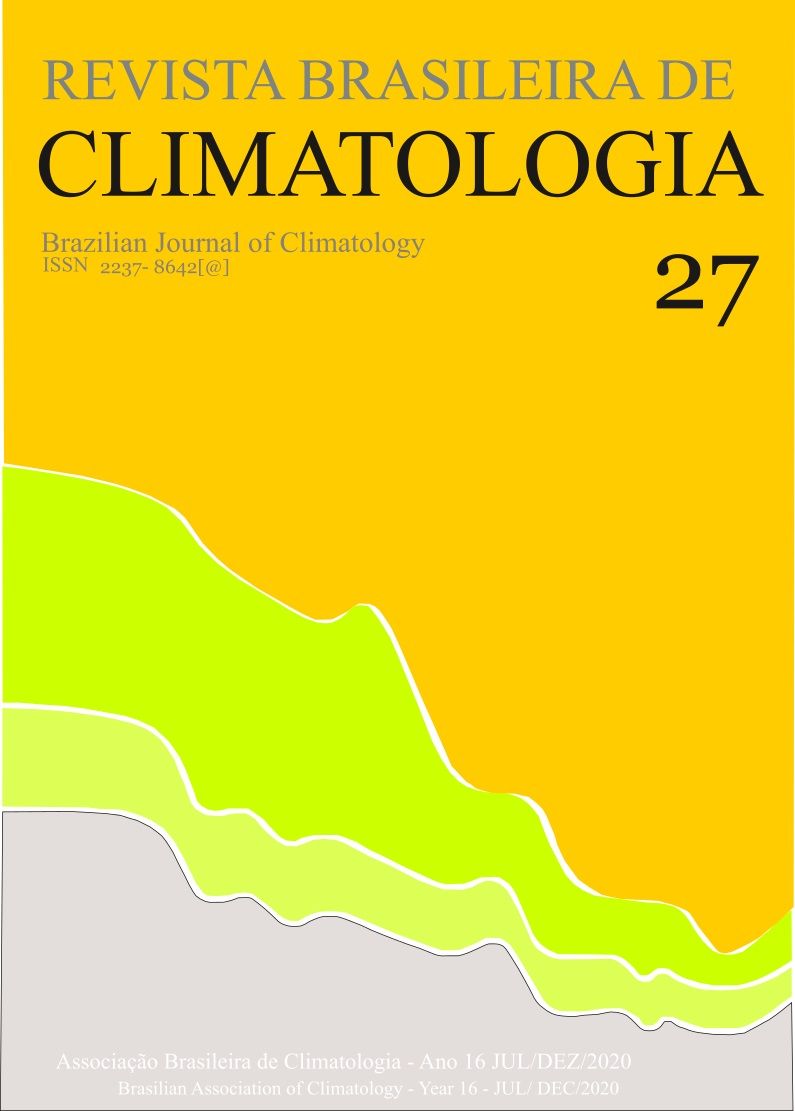WATER AVAILABILITY AND RISK OF DRY SPELLS FOR SOYBEAN IN THE WEST OF PARANÁ STATE, BRAZIL
DOI:
https://doi.org/10.5380/abclima.v27i0.69053Palavras-chave:
agricultural planning, rainfall variability, dry periods, climatic riskResumo
The water availability is the factor that most affects the production of soybean crops in the state of Paraná. Dry spells are extremely damaging to agricultural production and, therefore, studies that identify the frequency and intensity of these events are relevant to the planning of operations. Thus, the objective of this study was to evaluate the rainfall availability and to determine the frequency of dry spells in the Meso-region of Parana state. Precipitation data were collected from 48 stations distributed throughout the mesoregion between 1976 and 2018. Rainfall variability was analyzed in the annual, monthly and 10-days scales, and the frequencies of dry periods of 10 days from September to March and ≥ 20 days during the year. It was verified that the mesoregion showed differences in the amount of precipitation, but with enough rainfall for soybean cultivation. The relief favors the distribution of rainfall in the region. The southern portion has the highest mean precipitation, while the northern portion has the lowest. The dry spells frequencies per moving 10-day periods showed a maximum of 35% between the months of September and March in the region. The periods with the lowest risk are throughout the month of October, followed by December 10 to January 5. The biggest risks of dry spells are concentrated in the month of September, due to the irregular start of the rainy season. The results of this study help to choose the best sowing times such that the most sensitive phases of soybean cycle occur in the lowest risk periods.Downloads
Downloads
Publicado
Como Citar
Edição
Seção
Licença
A aprovação dos artigos implica a aceitação imediata e sem ônus de que a Revista Brasileira de Climatologia terá exclusividade na primeira publicação do artigo. Os autores continuarão, não obstante, a deter os direitos autorais. Os autores autorizam também que seus artigos sejam disponibilizados em todos os indexadores aos quais a revista está vinculada.
Os autores mantém seus direitos de publicação sem restrições
A Comissão Editorial não se responsabiliza pelos conceitos ou afirmações expressos nos trabalhos publicados, que são de inteira responsabilidade dos autores.
A Revista Brasileira de Climatologia oferece acesso livre imediato ao seu conteúdo, seguindo o entendimento de que disponibilizar gratuitamente o conhecimento científico ao público proporciona maior democratização do conhecimento e tende a produzir maior impacto dos artigos publicados. Os artigos publicados na revista são disponibilizados segundo a Licença Creative Commons CC-BY-NC 4.0 (https://creativecommons.org/licenses/by-nc/4.0/). Segundo essa licença é permitido acessar, distribuir e reutilizar os artigos para fins não comerciais desde que citados os autores e a fonte. Ao submeter artigos à Revista Brasileira de Climatologia, os autores concordam em tornar seus textos legalmente disponíveis segundo essa licença




